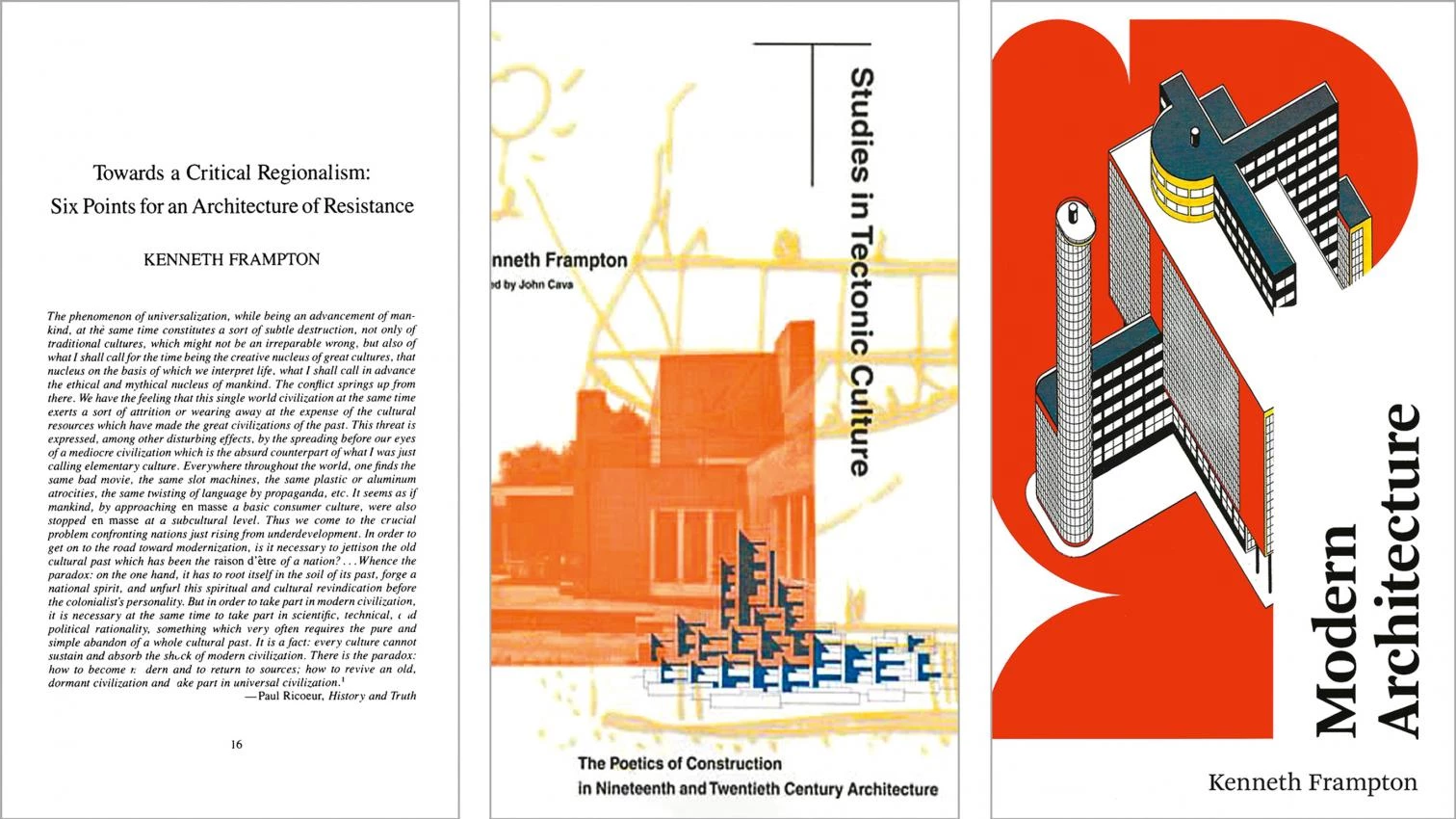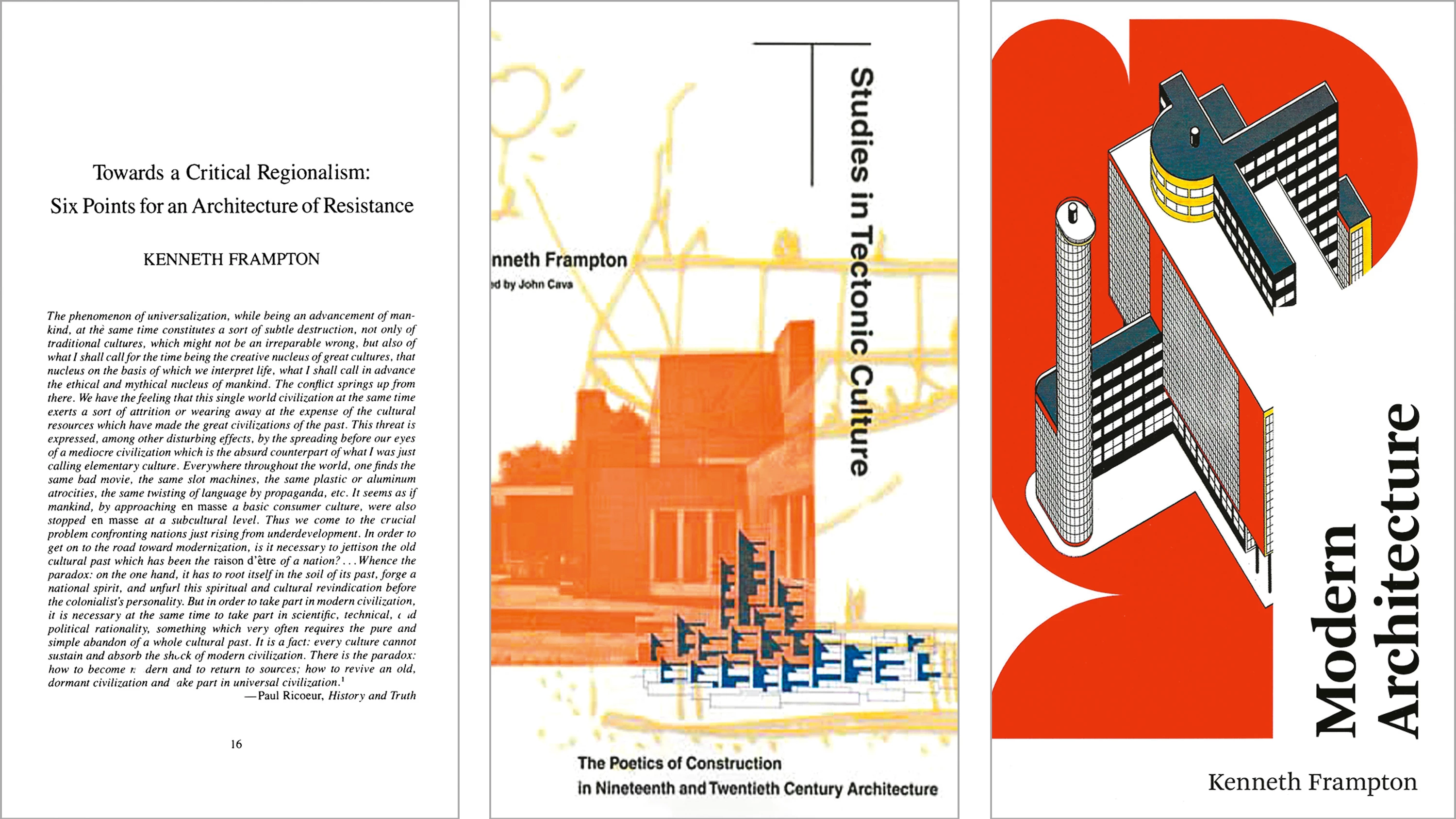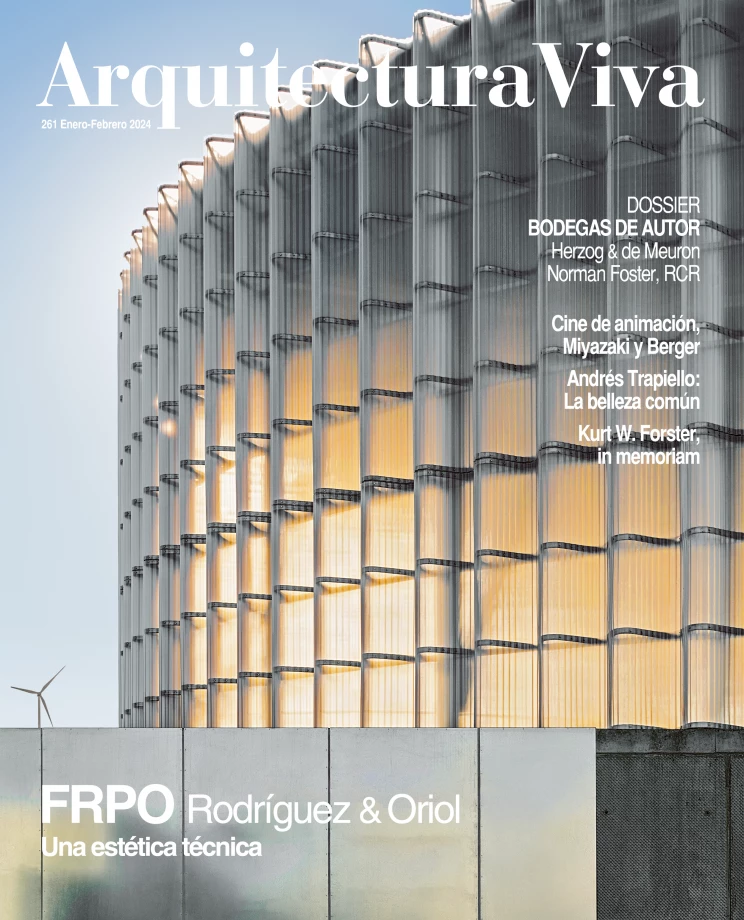
Kenneth Frampton has the handwriting of an architect: an elegant and regular calligraphy that shows the visual culture of a disciplined education. When awarded the Golden Lion at the 2018 Venice Biennale, the British historian and critic said of his work: “If there is anything good to be said of my writing, it’s that I write with the mind of an architect.” Indeed, Frampton regards buildings with the gaze of the practicing architect he was early in his career, and writes about them with the pulse that his professional and pedagogical experience gives him. First and foremost a teacher, his books and his classes have shaped the perception of several generations of architects, in whom he has instilled the conviction that building works cannot be separated from their social framework, and associating the critical label with an ideological commitment that is nevertheless undivorceable from aesthetic judgment. There are perhaps no constructions farther away from his idea of architecture than the ultra-slender skyscrapers of his adoptive New York, and despite this he admitted to me, dining in Manhattan, that he could not help being fascinated by Viñoly’s metaphysical monolith. In the end, the architect’s eye prevails over the ideologue’s brain, and his inclination to practice the ‘operative criticism’ reviled by Tafuri must be nuanced with his artistic sensitivity.
Frampton’s intellectual journey has had inflection points, which are connected by the thread of ‘criticism’ that already figured as the subtitle of his most important book, Modern Architecture: A Critical History, originally published in 1980 and significantly revised in the 1985, 1992, 2007, and 2020 editions. The first ‘operative’ argument was laid down in the 1983 essay ‘Towards a Critical Regionalism: Six Points for an Architecture of Resistance,’ using the concept coined by Alexander Tzonis and Liane Lefaivre two years before, to propose a modernity as resistant to cosmopolitan corporate international style as to the postmodernity to which the 1980 Venice Biennale had given a seal of approval. The second critical movement crystallized in Studies in Tectonic Culture: The Poetics of Construction in Nineteenth and Twentieth Century Architecture, a 1995 book he had referred to five years prior in the article ‘Rappel à l’ordre: The Case for the Tectonic,’ where the building craft was presented as a vaccine against the postmodern scenography co-opted by commercial architecture, and popularizing the terms ‘tectonic’ and ‘stereotomic,’ updated from the anthropological functionalism of Gottfried Semper. The third crossroads can be situated in the year 2000 with the publication of a 10-volume series, World Architecture: A Critical Mosaic, 1900-2000, where he coordinated and wrote the prologue for texts by a long list of critics from different parts of the planet, curbing the eurocentrism of the modern narrative, and which would have its final manifestation in the much expanded fifth edition of Modern Architecture in 2020.
This latest edition, published in time with Frampton’s 90th birthday, is of special importance because it radically modifies his legacy by adding to the three parts of the previous editions a 275-page fourth part, ‘World Architecture and the Modern Movement,’ which takes up almost half the book and tries to treat the entire planet ecumenically. Frampton says that to avoid the eurocentric and transatlantic slant of previous editions, he used our Atlas: Global Architecture circa 2000, published in 2007, as a reference, and to organize this fourth section, even adopted our division of the world into four major transcontinental regions (Europe, the Americas, Africa and the Middle East, Asia and Pacific), which correspond with the subsequent four-volume series, Atlas: Architectures of the 21st Century, produced between 2010 and 2012. This opening out to different horizons is also manifested in the bibliography, where there are as many as 31 references to the Atlas tomes, AV, or Arquitectura Viva, in contrast with the previous edition, which only included two extensive quotes of mine on Zaha Hadid and Herzog & de Meuron. Although Frampton remains staunchly faithful to Hannah Arendt, Paul Ricoeur, or Jürgen Habermas, it is surprising to find that in this testamentary edition, the initial Walter Benjamin quote has been replaced by a Guy Debord one, and the subtitle, ‘A Critical History’ appears neither on the cover nor on the spine. The axonometric drawing by Alberto Sartoris for Notre-Dame du Phare, which has been the cover image since 1980, remains, so the major expansion in conceptual and geographic scope does not affect the graphic continuity of this historic work.
I have lingered in this inflection point because the previous two have been much discussed by others, such as the authors of Architecture and the Lifeworld: Essays in Honor of Kenneth Frampton, a book published in 2020 – two years before retiring at Columbia, where he had taught since 1972 – that applauds his exceptional career as a critic and teacher. I have had many opportunities to see this firsthand since 1985, when with Tzonis-Lefaivre and other colleagues he participated in a Seville seminar on regionalism that we organized for Menéndez Pelayo International University, and which we subsequently used as the subject of one of the first AV issues; a theme which would lead to another seminar four years later, held in Los Angeles, this time titled ‘Critical Regionalism,’ coordinated by Tzonis-Lefaivre and with Frampton and myself speaking. My debt to him is so evident that one of my early articles in El País (‘La arquitectura y el ángel de la historia,’ 31 May 1986) was a joint commentary on his Modern Architecture: A Critical History and Tafuri and Dal Co’s Architettura Contemporanea, expressing an admiration that only grew when we together taught courses at the Berlage Institute between 1994 and 2005, including a ‘Theory Masterclass’ focused on the comparative analysis of pairs of buildings, a method Frampton explained in detail in the 2015 book A Genealogy of Modern Architecture. Some fruits of this relationship were a 1998 report we did with Ricardo Aroca on the reform of the Madrid School of Architecture, a 2009 evaluation of the project for the National Library of Slovenia that we prepared for that country’s culture ministry, and coinciding in several 2011 internal critique sessions with SOM in New York.
That Frampton’s relationship with Spain has always been intense is shown by his numerous engagements here, his articles published in Spanish media, and the amount of space given to the Iberian Peninsula in his critical and historical syntheses. When in 1996 I reviewed Studies in Tectonic Culture for El País, I could not help mentioning that the cover illustration was a sketch by Alejandro de la Sota for the Maravillas Gymnasium, and when in a 2022 issue of Arquitectura Viva I wrote on the publication of an English edition of L’altro Movimento Moderno, neither could I refrain from pointing out the book’s ending with the same Sota, a rare late presence which Frampton attributes to Spain’s late modernity, caused by the impact of its Civil War. After leaving Columbia, Kenneth Frampton moved back to the UK to settle in London, and the proximity to Spain makes us hope we can more frequently enjoy his sharp eye, the same gaze that put Spain in the discussions on critical regionalism and tectonic culture, and ensured it a place in the large global frieze that he stubbornly continues to map and write on.






